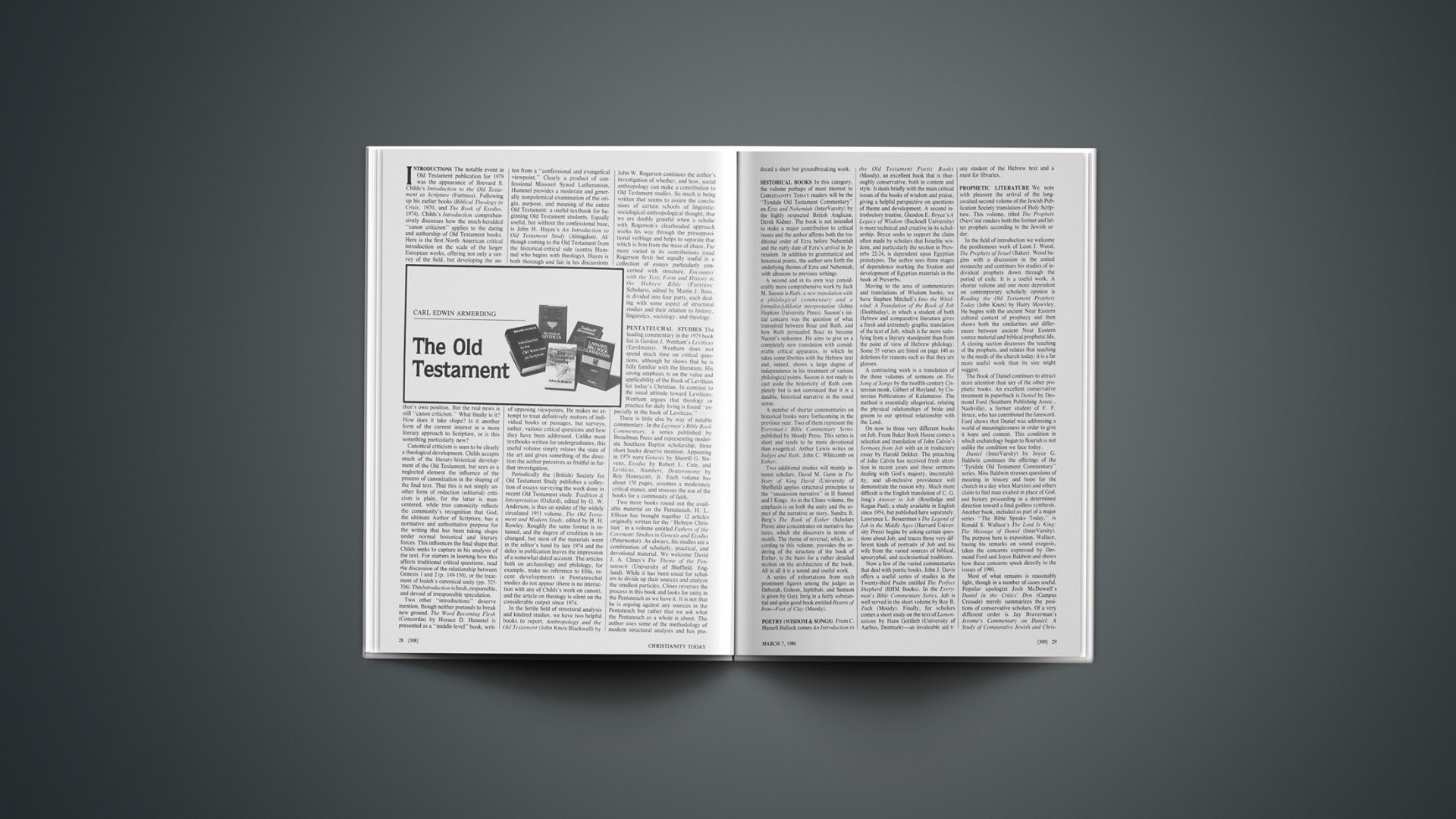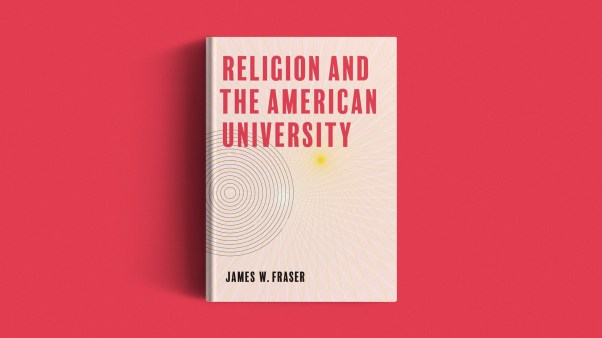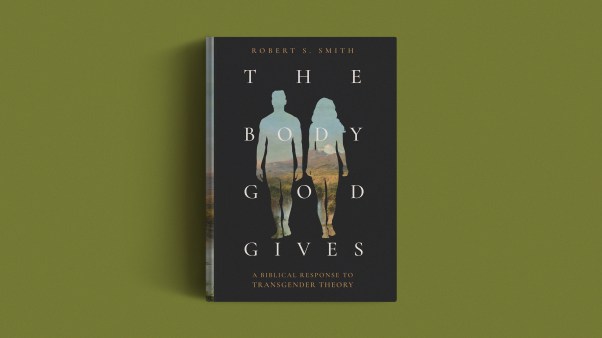Introductions The notable event in Old Testament publication for 1979 was the appearance of Brevard S. Childs’s Introduction to the Old Testament as Scripture (Fortress). Following up his earlier books (Biblical Theology in Crisis, 1970, and The Book of Exodus, 1974), Childs’s Introduction comprehensively discusses how the much-heralded “canon criticism” applies to the dating and authorship of Old Testament books. Here is the first North American critical introduction on the scale of the larger European works, offering not only a survey of the field, but developing the author’s own position. But the real news is still “canon criticism.” What finally is it? How does it take shape? Is it another form of the current interest in a more literary approach to Scripture, or is this something particularly new?
Canonical criticism is seen to be clearly a theological development. Childs accepts much of the literary-historical development of the Old Testament, but sees as a neglected element the influence of the process of canonization in the shaping of the final text. That this is not simply another form of redaction (editorial) criticism is plain, for the latter is man-centered, while true canonicity reflects the community’s recognition that God, the ultimate Author of Scripture, has a normative and authoritative purpose for the writing that has been taking shape under normal historical and literary forces. This influences the final shape that Childs seeks to capture in his analysis of the text. For starters in learning how this affects traditional critical questions, read the discussion of the relationship between Genesis 1 and 2 (p. 149–150), or the treatment of Isaiah’s canonical unity (pp. 325–336). This Introduction is fresh, responsible, and devoid of irresponsible speculation.
Two other “introductions” deserve mention, though neither pretends to break new ground. The Word Becoming Flesh (Concordia) by Horace D. Hummel is presented as a “middle-level” book, written from a “confessional and evangelical viewpoint.” Clearly a product of confessional Missouri Synod Lutheranism, Hummel provides a moderate and generally nonpolemical examination of the origin, purpose, and meaning of the entire Old Testament: a useful textbook for beginning Old Testament students. Equally useful, but without the confessional base, is John H. Hayes’s An Introduction to Old Testament Study (Abingdon). Although coming to the Old Testament from the historical-critical side (contra Hummel who begins with theology), Hayes is both thorough and fair in his discussions of opposing viewpoints. He makes no attempt to treat definitively matters of individual books or passages, but surveys, rather, various critical questions and how they have been addressed. Unlike most textbooks written for undergraduates, this useful volume simply relates the state of the art and gives something of the direction the author perceives as fruitful in further investigation.
Periodically the (British) Society for Old Testament Study publishes a collection of essays surveying the work done in recent Old Testament study. Tradition & Interpretation (Oxford), edited by G. W. Anderson, is thus an update of the widely circulated 1951 volume, The Old Testament and Modern Study, edited by H. H. Rowley. Roughly the same format is retained, and the degree of erudition is unchanged, but most of the materials were in the editor’s hand by late 1974 and the delay in publication leaves the impression of a somewhat dated account. The articles both on archaeology and philology, for example, make no reference to Ebla, recent developments in Pentateuchal studies do not appear (there is no interaction with any of Childs’s work on canon), and the article on theology is silent on the considerable output since 1974.
In the fertile field of structural analysis and kindred studies, we have two helpful books to report. Anthropology and the Old Testament (John Knox Blackwell) by John W. Rogerson continues the author’s investigation of whether, and how, social anthropology can make a contribution to Old Testament studies. So much is being written that seems to assure the conclusions of certain schools of linguistic-sociological-anthropological thought, that we are doubly grateful when a scholar with Rogerson’s clearheaded approach works his way through the presuppositional verbiage and helps to separate that which is firm from the mass of chaos. Far more varied in its contributions (read Rogerson first) but equally useful is a collection of essays particularly concerned with structure. Encounter with the Text; Form and History in the Hebrew Bible (Fortress Scholars), edited by Martin J. Buss, is divided into four parts, each dealing with some aspect of structural studies and their relation to history, linguistics, sociology, and theology.
PENTATEUCHAL STUDIES The leading commentary in the 1979 book list is Gordon J. Wenham’s Leviticus (Eerdmans). Wenham does not spend much time on critical questions, although he shows that he is fully familiar with the literature. His strong emphasis is on the value and applicability of the Book of Leviticus for today’s Christian. In contrast to the usual attitude toward Leviticus, Wenham argues that theology or practice for daily living is found “especially in the book of Leviticus.”
There is little else by way of notable commentary. In the Layman’s Bible Book Commentary, a series published by Broadman Press and representing moderate Southern Baptist scholarship, three short books deserve mention. Appearing in 1979 were Genesis by Sherrill G. Stevens, Exodus by Robert L. Cate, and Leviticus, Numbers, Deuteronomy by Roy Honeycutt, Jr. Each volume has about 150 pages, assumes a moderately critical stance, and stresses the use of the books for a community of faith.
Two more books round out the available material on the Pentateuch. H. L. Ellison has brought together 12 articles originally written for the “Hebrew Christian” in a volume entitled Fathers of the Covenant: Studies in Genesis and Exodus (Paternoster). As always, his studies are a combination of scholarly, practical, and devotional material. We welcome David J. A. Clines’s The Theme of the Pentateuch (University of Sheffield. England). While it has been usual for scholars to divide up their sources and analyze the smallest particles, Clines reverses the process in this book and looks for unity in the Pentateuch as we have it. It is not that he is arguing against any sources in the Pentateuch but rather that we ask what the Pentateuch as a whole is about. The author uses some of the methodology of modern structural analysis and has produced a short but groundbreaking work.
HISTORICAL BOOKS In this category, the volume perhaps of most interest to CHRISTIANITY TODAY readers will be the “Tyndale Old Testament Commentary” on Ezra and Nehemiah (InterVarsity) by the highly respected British Anglican, Derek Kidner. The book is not intended to make a major contribution to critical issues and the author affirms both the traditional order of Ezra before Nehemiah and the early date of Ezra’s arrival in Jerusalem. In addition to grammatical and historical points, the author sets forth the underlying themes of Ezra and Nehemiah, with allusions to previous writings
A second and in its own way considerably more comprehensive work by Jack M. Sasson is Ruth: a new translation with a philological commentary and a formalist-folklorist interpretation (Johns Hopkins University Press). Sasson’s initial concern was the question of what transpired between Boaz and Ruth, and how Ruth persuaded Boaz to become Naomi’s redeemer. He aims to give us a completely new translation with considerable critical apparatus, in which he takes some liberties with the Hebrew text and, indeed, shows a large degree of independence in his treatment of various philological points. Sasson is not ready to cast aside the historicity of Ruth completely but is not convinced that it is a datable, historical narrative in the usual sense.
A number of shorter commentaries on historical books were forthcoming in the previous year. Two of them represent the Everyman’s Bible Commentary Series published by Moody Press. This series is short and tends to be more devotional than exegetical. Arthur Lewis writes on Judges and Ruth, John C. Whitcomb on Esther.
Two additional studies will mainly interest scholars. David M. Gunn in The Story of King David (University of Sheffield) applies structural principles to the “succession narrative” in II Samuel and I Kings. As in the Clines volume, the emphasis is on both the unity and the aspect of the narrative as story. Sandra B. Berg’s The Book of Esther (Scholars Press) also concentrates on narrative features, which she discovers in terms of motifs. The theme of reversal, which, according to this volume, provides the ordering of the structure of the book of Esther, is the basis for a rather detailed section on the architecture of the book. All in all it is a sound and useful work.
A series of exhortations from such prominent figures among the judges as Deborah, Gideon, Jephthah, and Samson is given by Gary Inrig in a fairly substantial and quite good book entitled Hearts of Iron—Feet of Clay (Moody).
POETRY (WISDOM & SONGS) From C. Hassell Bullock comes An Introduction to the Old Testament Poetic Books (Moody), an excellent book that is thoroughly conservative, both in content and style. It deals briefly with the main critical issues of the books of wisdom and praise, giving a helpful perspective on questions of theme and development. A second introductory treatise, Glendon E. Bryce’s A Legacy of Wisdom (Bucknell University) is more technical and creative in its scholarship. Bryce seeks to support the claim often made by scholars that Israelite wisdom, and particularly the section in Proverbs 22–24, is dependent upon Egyptian prototypes. The author sees three stages of dependence marking the fixation and development of Egyptian materials in the book of Proverbs.
Moving to the area of commentaries and translations of Wisdom books, we have Stephen Mitchell’s Into the Whirlwind: A Translation of the Book of Job (Doubleday), in which a student of both Hebrew and comparative literature gives a fresh and extremely graphic translation of the text of Job, which is far more satisfying from a literary standpoint than from the point of view of Hebrew philology. Some 35 verses are listed on page 140 as deletions for reasons such as that they are glosses.
A contrasting work is a translation of the three volumes of sermons on The Song of Songs by the twelfth-century Cistercian monk, Gilbert of Hoyland, by Cistercian Publications of Kalamazoo. The method is essentially allegorical, relating the physical relationships of bride and groom to our spiritual relationship with the Lord.
On now to three very different books on Job. From Baker Book House comes a selection and translation of John Calvin’s Sermons from Job with an in troductory essay by Harold Dekker. The preaching of John Calvin has received fresh attention in recent years and these sermons dealing with God’s majesty, inscrutability, and all-inclusive providence will demonstrate the reason why. Much more difficult is the English translation of C. G. Jung’s Answer to Job (Routledge and Kegan Paul), a study available in English since 1954, but published here separately. Lawrence L. Beseerman’s The Legend of Job in the Middle Ages (Harvard University Press) begins by asking certain questions about Job, and traces three very different kinds of portraits of Job and his wife from the varied sources of biblical, apocryphal, and ecclesiastical traditions.
Now a few of the varied commentaries that deal with poetic books. John J. Davis offers a useful series of studies in the Twenty-third Psalm entitled The Perfect Shepherd (BHM Books). In the Everyman’s Bible Commentary Series, Job is well served in the short volume by Roy B. Zuck (Moody). Finally, for scholars comes a short study on the text of Lamentations by Hans Gottlieb (University of Aarhus, Denmark)—an invaluable aid to any student of the Hebrew text and a must for libraries.
PROPHETIC LITERATURE We note with pleasure the arrival of the long-awaited second volume of the Jewish Publication Society translation of Holy Scripture. This volume, titled The Prophets (Nevi’im) renders both the former and latter prophets according to the Jewish order.
In the field of introduction we welcome the posthumous work of Leon J. Wood, The Prophets of Israel (Baker). Wood begins with a discussion in the united monarchy and continues his studies of individual prophets down through the period of exile. It is a useful work. A shorter volume and one more dependent on contemporary scholarly opinion is Reading the Old Testament Prophets Today (John Knox) by Harry Mowvley. He begins with the ancient Near Eastern cultural context of prophecy and then shows both the similarities and differences between ancient Near Eastern source material and biblical prophetic life. A closing section discusses the teaching of the prophets, and relates that teaching to the needs of the church today; it is a far more useful work than its size might suggest.
The Book of Daniel continues to attract more attention than any of the other prophetic books. An excellent conservative treatment in paperback is Daniel by Desmond Ford (Southern Publishing Assoc., Nashville), a former student of F. F. Bruce, who has contributed the foreword. Ford shows that Daniel was addressing a world of meaninglessness in order to give it hope and content. This condition in which eschatology began to flourish is not unlike the condition we face today.
Daniel (InterVarsity) by Joyce G. Baldwin continues the offerings of the “Tyndale Old Testament Commentary” series. Miss Baldwin stresses questions of meaning in history and hope for the church in a day when Marxists and others claim to find man exalted in place of God, and history proceeding in a determined direction toward a final godless synthesis. Another book, included as part of a major series “The Bible Speaks Today,” is Ronald S. Wallace’s The Lord Is King: The Message of Daniel (InterVarsity). The purpose here is exposition. Wallace, basing his remarks on sound exegesis, takes the concerns expressed by Desmond Ford and Joyce Baldwin and shows how these concerns speak directly to the issues of 1980.
Most of what remains is reasonably light, though in a number of cases useful. Popular apologist Josh McDowell’s Daniel in the Critics’ Den (Campus Crusade) merely summarizes the positions of conservative scholars. Of a very different order is Jay Braverman’s Jerome’s Commentary on Daniel: A Study of Comparative Jewish and ChristianInterpretations of the Hebrew Bible (Catholic Biblical Quarterly), which includes a fresh translation of Jerome’s commentary.
In the “Proclamation Commentaries,” a short paperback series from Fortress Press designed to give ideas to ways in which the Old Testament is useful for preaching, 1979 saw the appearance of three additional books: Elizabeth Achtemeier’s Deuteronomy, Jeremiah, James Luther Mays’s Ezekiel, II Isaiah, and Bernhard W. Anderson’s The Eighth Century Prophets: Amos, Hosea, Isaiah, Micah. Three additional paperbacks combine study guide format with brief commentary. Thus Says the Lord by Reidar B. Bjornard (Judson Press) examines the book of Isaiah while Jeremiah: Prophet Under Siege (Judson Press) by James M. Efird continues the same series. Additional study guides include Jeremiah by Ernest E. Marten (Herald), Amos: Prophet of Lifestyle from the Neighborhood Bible Studies series, and Just Living by Faith by three authors and published as a study guide to Habakkuk by InterVarsity Press.
HISTORY AND THEOLOGY A welcome addition to the literature of Old Testament theology is William Dyrness’s students’ handbook, entitled Themes in Old Testament Theology (InterVarsity). The author makes no attempt at a full-orbed treatise, but this is a well-written, systematically arranged, nontechnical, and very useful book.
A massive study that makes a point of rejecting theological models for those of sociology, but nevertheless projects a thesis with profound implications for theology, is Norman K. Gottwald’s The Tribes of Yahweh: A Sociology of the Religion of Liberated Israel, 1250–1050B.C. (Orbis). Gottwald, a liberation-oriented biblical scholar, offers a major study into tribal life in early Israel in a framework that sees in the simple tribal structures the liberation missing in much of the remainder of the ancient Near East. This book will disturb many.
An attempt to understand prophecy by bringing to the study a concept from social psychology is Robert P. Carroll’s When Prophecy Failed (Seabury/SCM). The thesis is simple: most biblical prophecies are not understood because we fail to realize the theological and psychological context in which they were uttered. Carroll is convinced that the average Old Testament prophet was unconsciously or consciously attempting to deal with what psychologists call “cognitive dissonance” (a response to disappointed expectations). To interpret the prophet aright we must begin with his hermeneutics and only then move to ours.
Two books deal with the history and theology of the exile. Largely similar in method, these volumes reflect a sharply divergent style. James D. Newsome, Jr., in By the Waters of Babylon (John Knox) draws out the pathos and human experience of exile. Ralph W. Klein’s Israel in Exile (Fortress), wants to say something to the various “exiles” in which contemporary North Americans live, but his touch is that of the theologian rather than the storyteller. With Klein, moreover, it is more difficult to find the unity of response in the various witnesses, and we are left wondering whether there is a single theology that is appropriate.
The next two volumes are revisions of doctoral dissertations. The Just King (University of Sheffield) by Keith W. Whitelam approaches the little-worked area of the responsibility of the Israelite king to uphold justice. Whitelam argues that the royal role, ideally speaking, was largely administrative rather than legislative: a ruler’s activities were to be based on the rules of the covenant. Slightly less careful with Scripture but helpful in understanding an aspect of Israelite royal ideology which ultimately figured prominently in messianic projections is The Royal Dynasties in Ancient Israel (W. deGruyter) by Tomoo Ishida. The question of the extent to which either popular acclaim or divine designation was basic to Israelite kingship has long puzzled readers of I Samuel. By the time of David’s later rule, it is clear that the Judean monarchs can claim both divine authority and a dynastic succession. Ishida tries—not always with the confidence in Scripture we might hope for—to sort out how this development came about, both within Israel and against its ancient Near Eastern cultural milieu.
Three compact subject studies try to fill gaps in our knowledge of Old Testament faith. Claus Westermann gives us a mini-theology of the Old Testament under the title What Does the Old Testament Say About God? (John Knox). God is seen in revelation, history, salvation, creation, and blessing. Christ in the Old Testament (Moody) by James A. Borland is a study of the so-called Christophanies (appearances of Christ) in the Old Testament. Borland is convinced that every occurrence or manifestation of God in human form in the Old Testament was, in reality, an appearance of the Second Person of the Trinity and preparatory to the coming of Christ in the New. A third book, Occultism in the Old Testament (Dorrance) by Solomon A. Nigosian, argues that Old Testament records prove that, “despite the denunciatory excerpts, occultism was a legitimate and accepted norm in ancient Israelite society”—a questionable thesis.
Finally, two books that fit no other category. Gerhard von Rad (Word) by James L. Crenshaw is an appreciative portrait of the late, influential German theologian and is a good starting place for understanding his thought. By contrast, John L. McKenzie’s The Old Testament Without Illusion (Thomas More), is a book best avoided, as showing chiefly how far his researches have led him away from traditional belief in Scripture.
ARCHAEOLOGY Easily the most exciting archaeological book of the year is Ebla: A Revelation in Archaeology (Times Books) by Chaim Bermant and Michael Weitzman. Here a journalist and a scholar combine to give us the “real” story of the spectacular finds in North Syria. We still wonder whether we have the whole story, but the book is helpful and readable. Chapters on the history of Ebla’s discovery, its coverage in the world press, disputes over alleged Zionist plotting, problems between excavator and epigrapher, relation between Ebla and the Bible, all whet our appetite for more.
Beginning but serious students of the Bible backgrounds will rejoice at another splendid textbook from veteran archaeologist/writer Jack Finegan. Archaeological History of the Ancient Middle East (Westview/Dawson) is a connected account of what happened first in Mesopotamia and then in Egypt as revealed by the archaeologist’s spade, between roughly 10,000 B.C. and the rise of Alexander the Great (330 B.C.).
Two volumes will interest the specialist, though each has material that can be profitably consulted by any interested university graduate. Canaanite Myths and Legends (T. & T. Clark), edited by J.C.L. Gibson, is a thorough revision of a 1956 volume by G. R. Driver, in which all the Ugaritic literary texts are published in translation and transliteration, with a full introduction to each. Symposia (American Schools of Oriental Research), edited by F. M. Cross, brings together 11 essays on archaeology, early Israelite history, and sanctuaries in Israel.
LINGUISTIC AIDS Another volume of the Theological Dictionary of the Old Testament (Vol. III, gillulim-haras), edited by G. J. Botterweck and H. Ringgren, continues the rapid English translation of this important German work. Two additional volumes in The Computer Bible (Biblical Research Associates, Box 3182, Wooster, Ohio 44691), edited by F. I. Anderson and A. D. Forbes, continue this valuable study of Hebrew vocabulary. Volumes XIV and XIV A cover all of the words in the text of Jeremiah. Kregel has reprinted a nineteenth-century lexical aid by William Wilson, as Old Testament Word Studies. This book is a bit difficult to work through, but can function as a concordance as well as a dictionary for the Hebrew words behind English expressions in the King James Bible.
Following recent practice in New Testament studies, Baker Book House has issued an edition of Gesenius’ Hebrew-Chaldee Lexicon to the Old Testament numerically coded to Strong’s Exhaustive Concordance. This enables the reader to jump directly from Strong’s entry to the meanings in the Hebrew lexicon. Used with care, this tool can be of great value.
COLLECTED ESSAYS Two collections of essays arrived in 1979. Dedicated to the Union Seminary (N.Y.) don Samuel Terrien, Israelite Wisdom (Scholars Press) is edited by J. Gammie, W. Brueggemann, W. L. Humphreys, and J. Ward. Twenty essays on varied themes of wisdom scholarship are presented, with contributions from North America and Europe. In God and His Friends in the Old Testament (Universitetsforlaget Oslo, Norway), Norwegian scholar Arvid S. Kapelrud brings together 18 of his own articles, particularly on the Psalms and Qumran.
FOR SCHOLARS ONLY This section will only list titles, most of which with the subtitles included are descriptive of content.
Three studies that come as supplements to the “Journal for the Study of Old Testament” (University of Sheffield) are: Thanksgiving for a Liberated Prophet: An Interpretation of Isaiah Chapter 53 by R. N. Whybray, The Sense of Biblical Narrative: Three Structural Analyses in the Old Testament (1 Sam. 13–31, Num. 11–12, 1 Kings 17–18) by David Jobling, and Yahweh as Prosecutor and Judge by Kirsten Nielsen. Two books are part of the Harvard Semitic Monograph series (Scholars Press): Parallelism in Early Biblical Poetry by Stephen A. Geller and The Qumran Text of Samuel and Josephus by E. C. Ulrich, Jr. Also from Scholars Press come Biblical Hapax Legomena in the Light of Akkadian and Ugaritic by Harold R. Cohen and “Righteousness” in the Septuagint of Isaiah by John W. Olley. Finally, we notice Robert R. Wilson’s Genealogy and History in the Biblical World (Yale University).
Carl F. H. Henry, first editor of Christianity Today, is lecturer at large for World Vision International. An author of many books, he lives in Arlington, Virginia.










